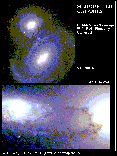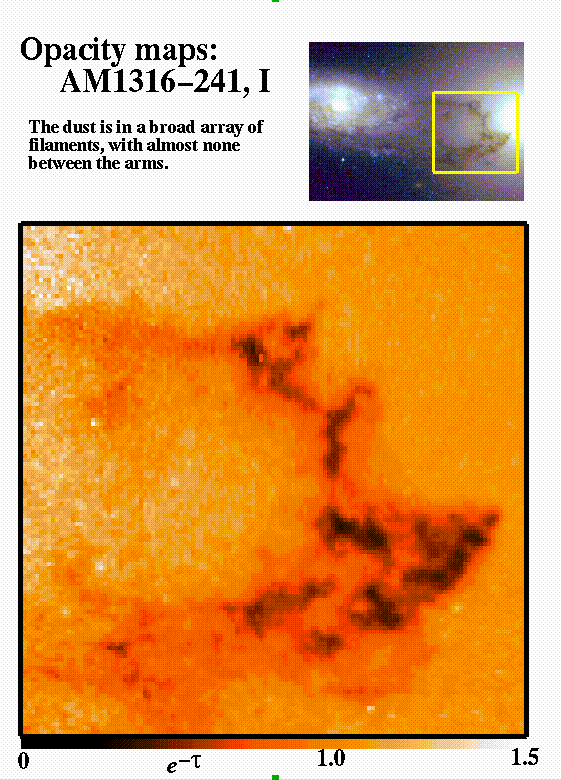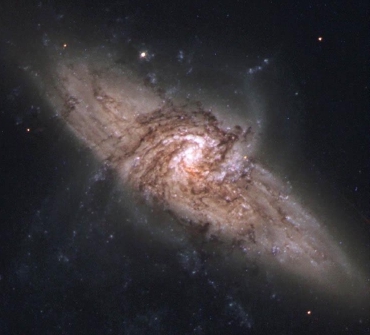


There has been considerable controversy about the dust content of spiral galaxies, with some new results casting doubt on the traditional assumption that its effects on emerging light are relatively minor. Trying to avoid some of the pitfalls of modelling and statistics on such complex systems, Ray White III and I have been exploring the use of galaxy overlaps to measure the dust extinction in an unusually direct way. As background to the current HST and ISO observations, you may wish to peruse a WWW poster paper on our ground-based results that Ray prepared for a 1996 meeting in South Africa. It's important to understand dust in galaxies because it can have a profound effect on how we see them, and thus on how we interpret such diverse matters as the amount of dark matter galaxies contain, how may quasars do or don't exist in the early Universe, and how the different components of interstellar matter interact with each other and with stars at the beginning and end of their lives. More details (and lots of them) can be found in my course lecture on dust in galaxies. For a nice example of using dust to trace mass transfer between interacting galaxies, see the section on HST imaging and interpretation of NGC 1409/10.
Read the press release on the HST and ISO results presented at the January 1998 meeting of the American Astronomical Society. The accompanying pictures are available in several forms:
 | a GIF (82k) of the press-release montage |

| HST Color composite image of AM0500-620, in full-resolution TIFF(718K), GIF(142K), or JPEG (31K). For comparison, you can see our earlier ground-based picture |
 |
Color-composite HST image of AM1316-241, again as full-resolution TIFF(1200K), GIF(238K), or JPEG(53K) |
Some panels from our 1998 AAS poster paper are available, to see yet more detail. Read the abstract, the background and technique, or the summary of results. From HST imagery, we generated these opacity maps for the two spirals backlit by E/S0 galaxies:
 |
 |
We've gotten more adventurous in this work, and are now trying to unscramble the absorption in the overlapping (that's a mild word, they're almost exactly superimposed) galaxy pair NGC 3314. The data for this formed part of the May 2000 Hubble Heritage picture, reproduced below (and could I help it if the new data for the Heritage production are scientifically useful?). An especially interesting aspect of this object is that we can now see the background nucleus and estimate the dust extinction closer to the foreground nucleus than any other direct technique allows (about a factor of 10 in the I band; it would be much larger in blue light but we have great trouble measuring its feeble contribution). How do we know that's the background nucleus? It matches the location seen in near-IR images, like one we got with the NASA Infrared Telescope Facility.

Back to Bill Keel's home page or Ray White's home page.
Last updated: May 2000